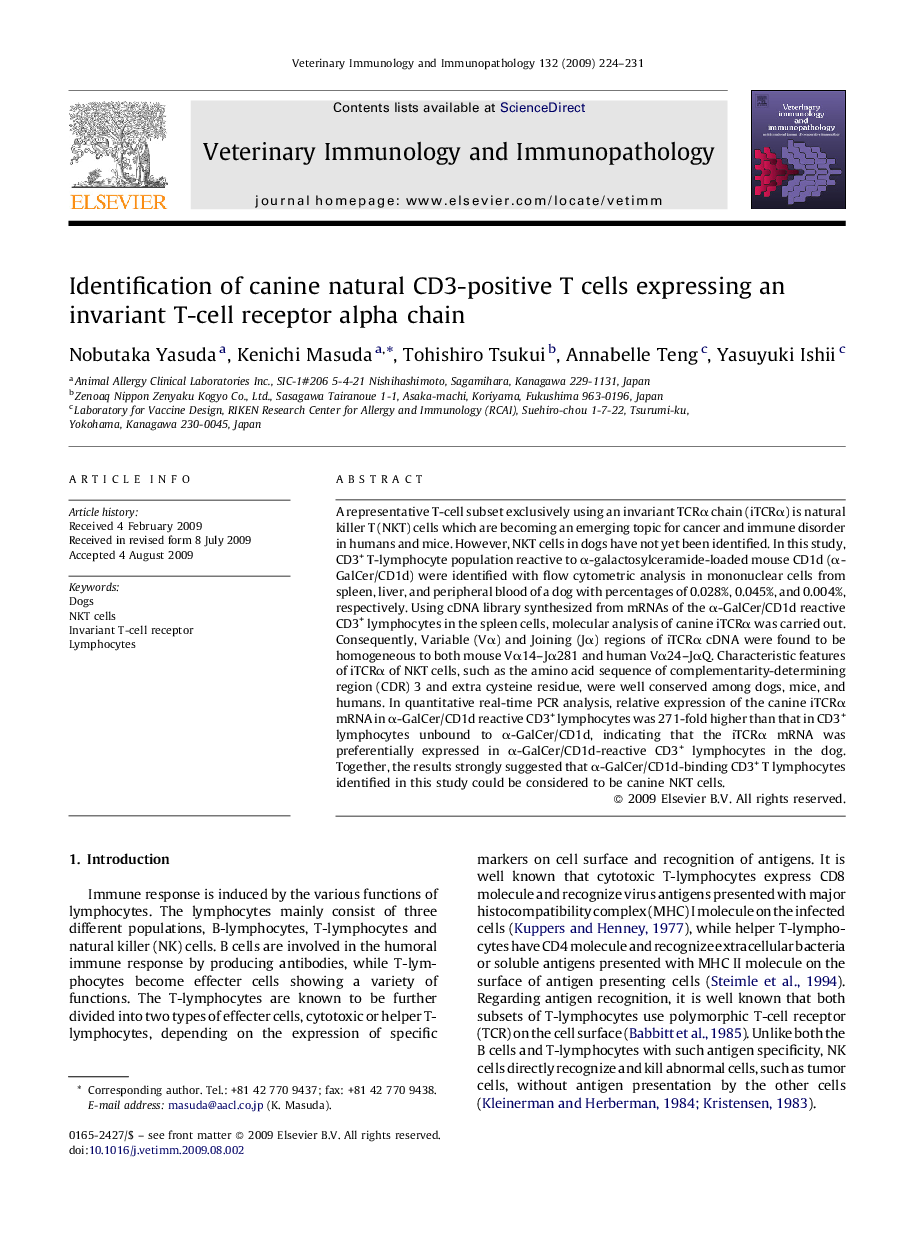| Article ID | Journal | Published Year | Pages | File Type |
|---|---|---|---|---|
| 2462617 | Veterinary Immunology and Immunopathology | 2009 | 8 Pages |
A representative T-cell subset exclusively using an invariant TCRα chain (iTCRα) is natural killer T (NKT) cells which are becoming an emerging topic for cancer and immune disorder in humans and mice. However, NKT cells in dogs have not yet been identified. In this study, CD3+ T-lymphocyte population reactive to α-galactosylceramide-loaded mouse CD1d (α-GalCer/CD1d) were identified with flow cytometric analysis in mononuclear cells from spleen, liver, and peripheral blood of a dog with percentages of 0.028%, 0.045%, and 0.004%, respectively. Using cDNA library synthesized from mRNAs of the α-GalCer/CD1d reactive CD3+ lymphocytes in the spleen cells, molecular analysis of canine iTCRα was carried out. Consequently, Variable (Vα) and Joining (Jα) regions of iTCRα cDNA were found to be homogeneous to both mouse Vα14–Jα281 and human Vα24–JαQ. Characteristic features of iTCRα of NKT cells, such as the amino acid sequence of complementarity-determining region (CDR) 3 and extra cysteine residue, were well conserved among dogs, mice, and humans. In quantitative real-time PCR analysis, relative expression of the canine iTCRα mRNA in α-GalCer/CD1d reactive CD3+ lymphocytes was 271-fold higher than that in CD3+ lymphocytes unbound to α-GalCer/CD1d, indicating that the iTCRα mRNA was preferentially expressed in α-GalCer/CD1d-reactive CD3+ lymphocytes in the dog. Together, the results strongly suggested that α-GalCer/CD1d-binding CD3+ T lymphocytes identified in this study could be considered to be canine NKT cells.
